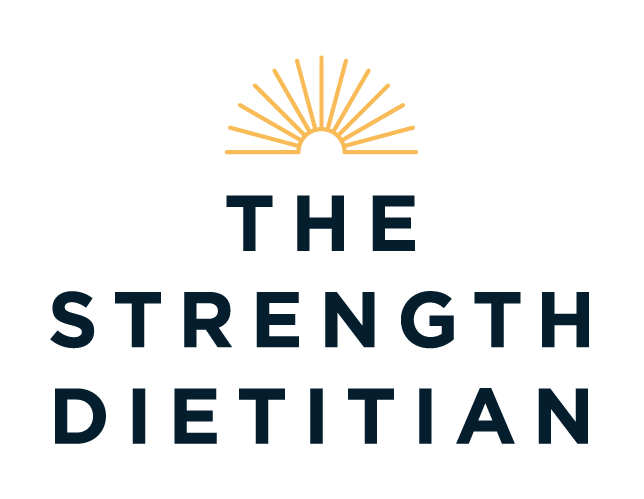Top 5 Plant-based Protein: The Strength Dietitian’s Guide
The secret to getting enough protein on a vegan or vegetarian diet, is choosing one protein-rich source at each main meal.
Whilst mock meats are delicious and are occassionally B12-foritfied, they’re not the healthiest options when it comes to vegan protein. Try these 5 protein-rich sources instead.
Tofu
Tofu is a minimally processed vegan protein source. It’s made from curdling fresh soy milk and pressing it into a solid block. Similar to the way cheese is made, but completely free of animal products and higher in protein and lower in fat than your traditional cheese. Tofu comes in all shapes and sizes; firm, medium, soft, silky, plain or pre-marinated.
Not sure which tofu to use? Firm tofu (pressed to remove some of the water) is the best for stir-frying, baking or grilling because it doesn’t crumble and fall apart. Soft or silky versions work perfectly for soups and I often used them when making miso soup or hot pot.
If you’re new to tofu, I suggest trying a firm, pre-marinated tofu so you don’t have to go through the hassle of pre-marinating and it' won’t fall apart wheny ou cook it. For a lazy throw-together dinner, I add marinated satay tofu with steamed green beans and brown rice. You can do it in under 5 minutes!
Seitan
Pronounced as “Say-Tan” and not “Satan”.
Seitan is an underrated gem made from wheat gluten. You might think because it’s made from wheat gluten, it’d be similar to bread and super high in carbohydrates. In fact, it has minimal carbohydrate and fat, and is rich in protein!
While tofu gets all the fame and glory for being a lean vegan protein, seitan is actually higher in protein and lower in fat than tofu. While I am far from a good cook, it’s nice and simple to cook and tastes great when lightly pan-fried with lemongrass until the seitan is crisp and chewy. Seitan doesn’t quite absorb flavours as well as tofu but is still a great alternative.
Sounds like it’d taste weird? You might be surprised to find you’ve already tried seitan. It’s frequently the main ingredient for vegan mock meats including plant-based deli slices.
Textured vegetable protein (TVP) or textured soy protein.
Can’t imagine giving up your spag bowl or lasagna? You don’t have to. TVP is the perfect, healthy substitute for red meat. It is ridicolously high in protein and absorbs all the aromas and flavours of the liquid, broth or sauce that it’s simmered in. It’s easy to use in tomato-based dishes, but be warned there is a weird aftertaste that may take some time to get used to. On the brightside, I’ve yet to find a vegan protein that mimics the texture of ground beef mince so closely!
Looking after your heart health? It’s extremely low in saturated fat with only 1.8g per 100g. Saturated fat is definitely a nutrient we try our best to limit as excess saturated fat can increase your LDL (low-density lipoprotein) and put you at risk ofc cardiovascular disease. The reason why TVP is so low in fat is because the fat is removed during production.
Edamame
Munch on a high protein, vegan-friendly snack!
One cup of edamame has 17g of protein and has all your essential amino acids. It’s an effortless protein source that can be cooked in under 10 minutes by steaming or roasting. It’s also the perfect side to your sushi but in case you don’t want to pay premium prices for it, you can find it for the price of a bag of peas in your local supermarket and Asian grocery store. Look in the frozen section (or you can find it in a snack form next to the roasted nuts).
Tempeh
Good for your gut, if your taste buds can handle it!
I have to admit, I have a tumultous relationship with tempeh. My gut bacteria loves it and my tastebuds are a bit skeptical about it. Tempeh is fermented, and feeds the good bacteria in your gut. It can be used as a protein source in any dish that tofu can be used in. Just in case your tastebuds can’t hand it either, you can still keep your gut happy by eating all the colours of veggies, fruit, legumes and beans.
Bonus: Protein powders:
If you’re struggling to get in enough protein, protein powders can help supplement your protein intake to ensure you are recovering from your workouts and optimising muscle growth. Choose a pea and rice mixture to create a complete protein source.
While food first is a good approach when getting in enough protein, you may find it takes some time and planning to get in adequate protein to fuel your training and recovery.
What should you look for in a vegan protein powder?
all the essential amino acids
2-3g of leucine per serve.
A mixture of brown rice and pea protein has all the essential amino acids present and creates a complete protein. Leucine is an amino acid that is important for maximising muscle synthesis. Research shows that 3g of leucine or ~0.05g leucine/kg bodyweight at each meal, multiple times a day, is helpful in maximising muscle protein synthesis. [1]
What to do if your protein is chalky? To work around a chalky protein, mix with soy or almond milk in a blender. Add ice, your choice of nut butter and a handful of frozen fruit for the perfect post-workout protein shake for a hot summer’s day.
If you need some help with muscle gain and hitting your protein targets on a plant-based diet, shoot us an email at valentina@thestrengthdietitian.com.au today!
[1] Norton, Layne & Wilson, Gabriel. (2009). Optimal protein intake to maximize muscle protein synthesis Examinations of optimal meal protein intake and frequency for athletes. Agro Food Industry Hi-Tech. 20. 54-57.

